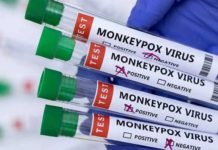A recent study by PricewaterhouseCoopers (PwC) examined the future of pharma and revealed essential technological and IT strategies. Developments in manufacturing, research and development (R&D), and IT will shape the future of pharma, as Ingrid Maes of PwC elaborates.
According to PwC, one of the major steps pharmaceutical companies need to take is to create better connectivity between different parts of their value chains. “Much technological architecture is in the form of separate stand-alone systems – one for one part of R&D, another for another part, a quite different one for manufacturing, and so on. This is becoming unsustainable and will be completely so by 2020,” says Maes.
Embracing innovation
“Technological and IT changes are critical if companies are to embrace the full potential of the FDA’s cGMP (US Food and Drug Administration’s current Good Manufacturing Practice) and new validation guidelines,” Maes says. “They are equally critical to reduce drug development times. Technological innovation can radically reduce costs by minimizing waste. Investments such as quality by design (QbD), Process Analytical Technology (PAT), and product lifecycle management and knowledge management tools are ways companies can prepare for live licensing while addressing the pressures of today.
“Such investments can help companies deliver more flexible manufacturing, reduce costs, respond to regulations, and bridge the gap between R&D and manufacturing – and thus reduce development times and business risks,” she says.
Areas of improvement
The PwC Pharma 2020 study provides some examples of possible areas for improvement. One focus is on using product and process lifecycle management systems. By introducing such systems, pharmaceutical companies can improve their responsiveness to new regulatory and official initiatives. These include the publication of the FDA process validation draft guidance, the International Society for Pharmaceutical Engineering (ISPE) PQLI (product quality lifecycle implementation), live licensing submissions based on e-CTD (electronic Common Technical Document), and the ASTM E55 continuous quality verification standard.Another area of improvement identified in the study is achieving built-in quality through PAT. QbD in R&D reduces process development, upscaling, and technology transfer time, while PAT in the plant delivers greater productivity at lower costs. “Many pharma companies have been slow to implement PAT. When they do, they implement it in a narrow way rather than realizing its full potential. PAT/QbD lets companies move from 70 to 90 percent yields to near zero wastage,” says Maes.
What is Pharma 2020?
The PwC Pharma 2020 series of reports paints a challenging and compelling vision of the pharmaceutical industry:
All medicines receiving approval will be approved on a real-time basis, with live licenses contingent on extensive in-life testing, including trials in patient subpopulations.
Pharma products will become more diverse
Technologies for manufacturing will become more complex
Many agencies will share safety and efficacy data to create a broader picture of how medicines perform.
Specific recommendations
“There are two essential building blocks: first, fast transfer from R&D to manufacturing, and second, linking feedback from patients directly to the development and manufacturing process,” says Maes. Many of these changes cannot wait. Regulators are now requesting insight on produced batch information. Data information systems need to be configured to allow safe and efficient data exchange with authorities and clients.
In the other direction, feedback from clients and suppliers offers opportunities for product improvement. Internet portals and customer relationship management (CRM) systems must be developed to capture this feedback.
Judging the best technological moves
Many companies seek to implement change but do so in ways that do not maximize benefits. To better accommodate the forces that will shape the future of pharma, road maps should cover 5 to 10 years. In the short term, companies will upgrade facilities to lower manufacturing costs, increase safety and quality, comply with new regulations, and so on. These upgrades can include more automation, integration of equipment and systems, and new technologies. In the medium term, companies will increasingly replace batch manufacturing and “after the event” product testing with automated and integrated continuous manufacturing. This will allow manufacturing on a smaller footprint. And finally, in the long term, more personalized medicines could increase manufacturing and supply chain complexity. A larger variety of products will require greater flexibility in production and closer integration along the whole pharmaceutical chain.


























